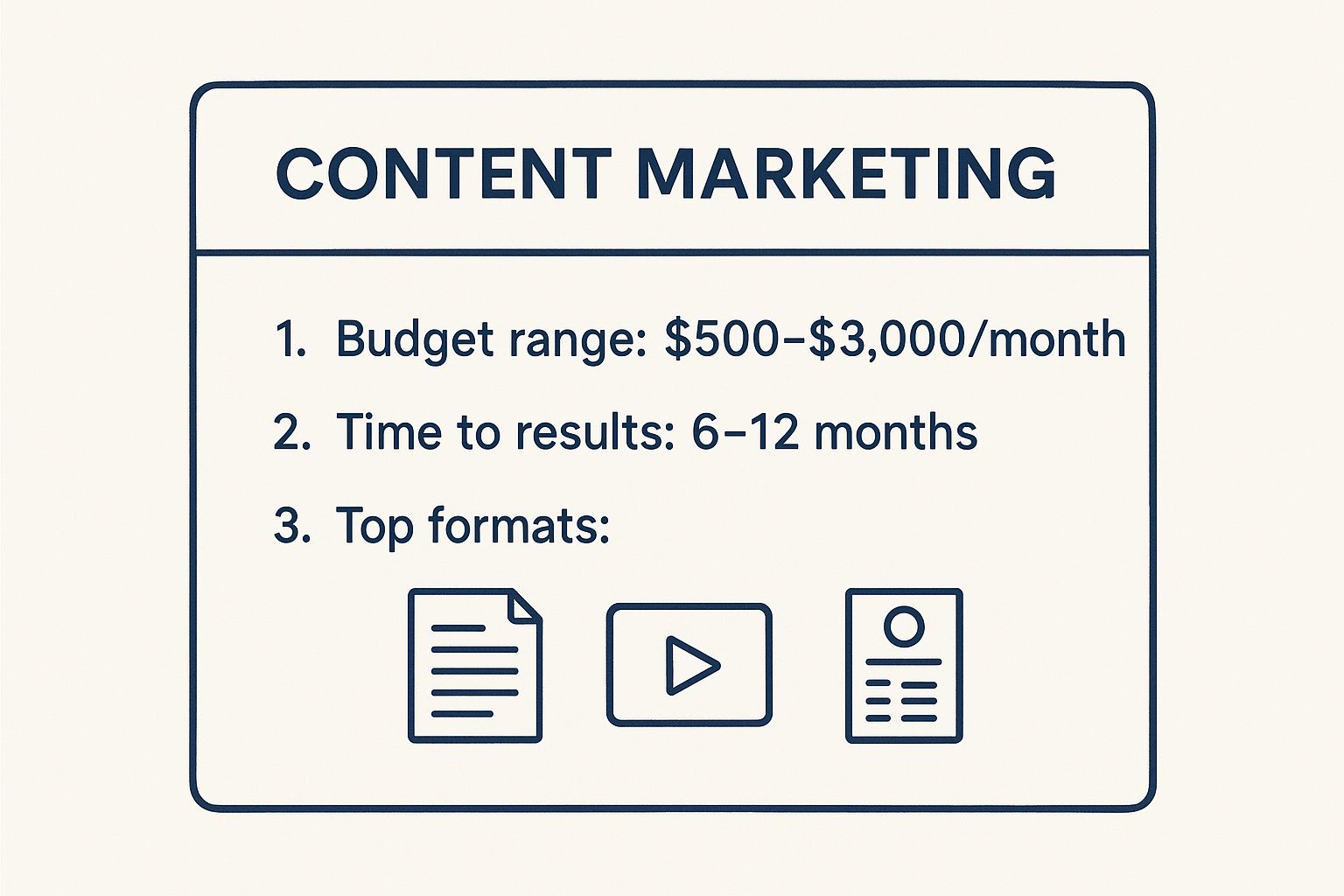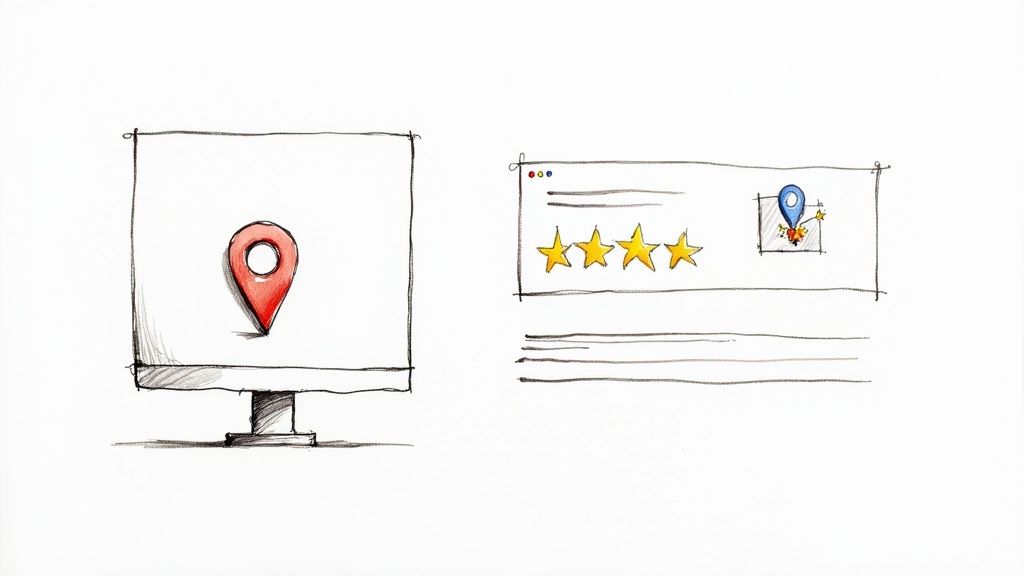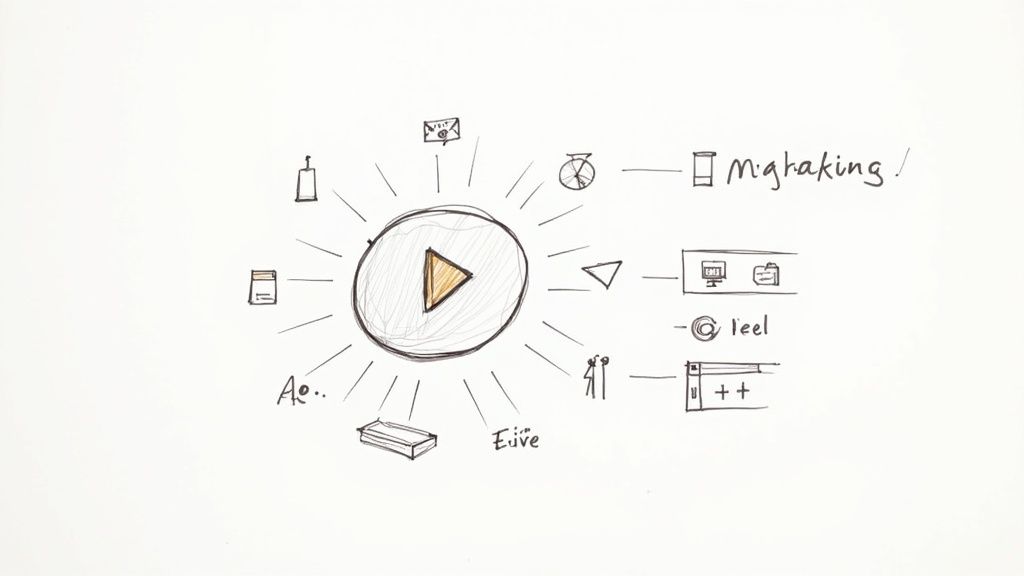
Mastering Lead Generation for Healthcare: Proven Strategies for 2025
Master lead generation for healthcare with proven strategies for 2025. Learn to attract, nurture, and convert quality leads in the complex healthcare market.

In a competitive market, having a great product or service is only half the battle. Effective marketing is the engine that drives growth, connects you with customers, and builds a brand that lasts. For small businesses, navigating the vast world of marketing can feel overwhelming. The secret isn't trying to do everything at once; it's about focusing your energy on what truly works.
This guide cuts through the noise. We've compiled 9 powerful and proven small business marketing strategies that deliver tangible results without breaking the budget. We provide actionable steps, practical tips, and real-world examples for each strategy, from content creation to local SEO. Think of this as your playbook for building a marketing machine that fuels sustainable growth.
Each strategy is a crucial component of a larger plan. For a more in-depth look at crafting your overall approach, consider this comprehensive guide on small business marketing strategy before diving into the specific tactics below. Let’s get started.
Content marketing is one of the most powerful small business marketing strategies for building long-term, sustainable growth. Instead of directly selling, you create and share valuable content that educates, entertains, or solves problems for your target audience. This approach establishes your business as a trusted authority and builds a relationship with potential customers before they are ready to buy.
By consistently providing useful information through blog posts or videos, you attract visitors who are actively searching for solutions you can provide. For example, River Pools famously grew its business by creating blog content that answered every conceivable customer question about fiberglass pools. This strategy addresses customer pain points directly, building trust and keeping your brand top-of-mind.

While content marketing requires patience, its strength lies in creating assets that deliver results for years. To manage this process effectively, a modern content management system is essential. You can explore the future of CMS platforms on BrandBooster.ai to see how technology can streamline your efforts.
Social media marketing is an essential small business marketing strategy that leverages platforms like Instagram, Facebook, and TikTok to build brand awareness, engage with customers, and drive sales. The goal is to create an authentic community by sharing valuable content and starting conversations where your target audience already spends their time.

This strategy focuses on humanizing your brand and building relationships. For instance, the beauty brand Glossier built a massive following primarily through authentic Instagram engagement, turning customers into advocates. By showcasing user-generated content and behind-the-scenes glimpses, they fostered a loyal community that felt connected to the brand’s mission. This approach makes your business more relatable and trustworthy.
Social media allows you to connect directly with your customers and build a brand personality that resonates with your audience. For guidance, experts like Jasmine Star provide actionable social media strategies for small businesses on her website.
Email marketing is a cornerstone of effective small business marketing strategies, giving you direct access to an audience that has opted in to hear from you. It involves building a subscriber list and sending them valuable content and promotions to nurture relationships and drive sales. Unlike social media, email isn't governed by unpredictable algorithms, offering one of the highest returns on investment.
By collecting email addresses, you create a direct line of communication with potential and existing customers. This allows you to send targeted messages that guide them through their buying journey. For example, the newsletter-first media company Morning Brew built a multi-million dollar business by delivering engaging daily emails. This approach fosters loyalty and keeps your brand in front of an interested audience, turning subscribers into customers.
Email marketing is highly effective because it focuses on measurable outcomes like open rates and conversions. You can explore how performance marketing drives results on BrandBooster.ai to see how these principles apply more broadly.
Local SEO is a crucial small business marketing strategy for any company with a physical location or service area. It focuses on optimizing your online presence to attract customers from relevant local searches. This revolves around enhancing your Google Business Profile (GBP), building local citations, and managing reviews to appear in Google’s ‘Local Pack’ and on Maps.

When a customer searches for "plumber near me," Google’s algorithm prioritizes businesses that are geographically close and have a well-optimized online presence. For example, a local HVAC company can double its inbound leads by meticulously completing its GBP, encouraging customer reviews, and ensuring its business information is consistent across all online directories. This connects you with customers who have a high intent to purchase.
Local SEO’s power lies in generating high-quality leads at the exact moment a customer is searching for a local solution. Analyzing performance data is key to refining this process. You can discover more about leveraging analytics by exploring how data-driven marketing works on BrandBooster.ai.
Referral marketing is one of the most trusted and cost-effective small business marketing strategies because it turns your happiest customers into an authentic sales force. This approach systematizes word-of-mouth by creating a structured program that incentivizes people to share your business. It leverages social proof, as a recommendation from a friend is far more persuasive than a traditional advertisement.
This strategy rewards existing customers for bringing in new ones. Dropbox famously used a double-sided referral program, offering extra storage to both the referrer and the new user, which fueled its explosive 3900% growth in 15 months. By making the referral process simple and the reward valuable, you lower the barrier for customers to become advocates, creating a self-perpetuating growth loop.
Partnership marketing is a highly effective small business marketing strategy where you collaborate with complementary businesses to cross-promote to each other's audiences. This provides immediate access to a new, relevant customer base, enhances brand credibility, and allows you to share marketing costs. It’s a powerful way to generate growth without a massive advertising budget.
This strategy focuses on creating win-win scenarios. For example, a local fitness studio could partner with a healthy meal prep company. They serve the same health-conscious audience but are not direct competitors. By offering mutual discounts or co-hosting a wellness event, both businesses gain exposure to qualified leads and strengthen their community presence. Similarly, GoPro and Red Bull’s iconic partnership leverages shared brand values to reach a massive, engaged audience.
Video marketing is an essential part of modern small business marketing strategies, using visual storytelling to engage audiences and build powerful emotional connections. From quick Instagram Reels to in-depth YouTube tutorials, video content captures attention far more effectively than text or images alone. This approach allows you to demonstrate products, share your brand’s personality, and communicate value in a digestible format.

Video drives higher engagement and conversion rates by making complex information simple and relatable. For instance, Blendtec's famous "Will It Blend?" series showcased the power of its blenders by pulverizing everything from iPhones to golf balls. This creative approach generated millions of views and a 700% increase in sales, proving that a compelling video can turn a simple product into a viral sensation.
While many small business marketing strategies focus on finding new customers, retaining existing ones is far more cost-effective. Customer retention marketing is the practice of engaging your current customer base to encourage repeat purchases and build long-term loyalty. Increasing retention rates by just 5% can boost profits by 25% to 95%.
This strategy focuses on nurturing the relationship you already have with your customers. By making them feel valued, you transform one-time buyers into loyal advocates. For instance, a local coffee shop's simple punch card system can increase visit frequency. Similarly, e-commerce giants like Sephora drive over 80% of their annual sales through their loyalty program, showing the power of making customers feel like part of an exclusive club.
This approach builds a stable revenue stream from customers who already trust your brand. You can learn about maximizing customer retention with a small business loyalty program to explore advanced techniques.
Influencer marketing is an effective small business marketing strategy for reaching niche audiences through trusted voices. Instead of broadcasting ads, you partner with individuals who have an engaged following to authentically promote your products or services. This leverages the trust an influencer has built with their community, making their recommendations feel like a friend's advice.
This strategy is particularly powerful when focusing on micro-influencers (10K-100K followers). These creators often have higher engagement rates and a more dedicated audience. For example, the watch brand Daniel Wellington grew into a multi-million dollar company almost entirely by gifting its products to thousands of micro-influencers, who then shared photos and unique discount codes with their followers, creating a massive word-of-mouth effect.
Navigating marketing can be overwhelming, but you don't need a massive budget to make an impact. The most effective small business marketing strategies are not about doing everything at once, but doing a few things exceptionally well and consistently.
The journey from learning to doing is where real growth happens. Don't let this list become just another saved article.
Building a powerful marketing engine is a marathon, not a sprint. Consistency is your greatest asset. By focusing your efforts, measuring your outcomes, and adapting based on real data, you can transform these ideas into a sustainable system that fuels your growth.
Ready to accelerate your growth with a data-driven approach? BrandBooster.ai helps you implement powerful small business marketing strategies by leveraging AI to optimize your campaigns and deliver real, measurable returns. See how our outcome-driven solutions can turn your marketing efforts into your greatest asset at BrandBooster.ai.